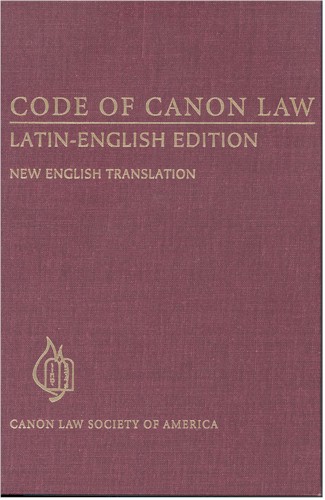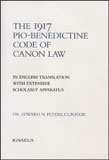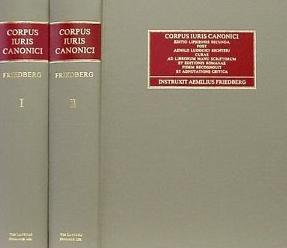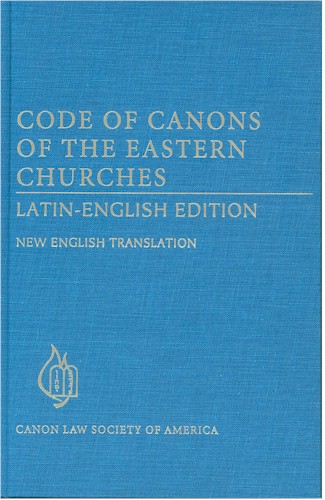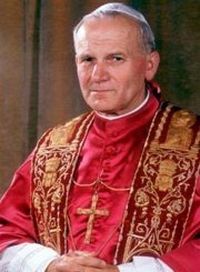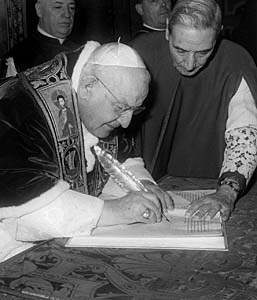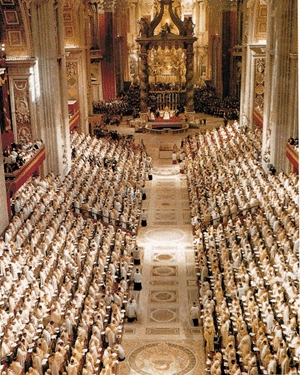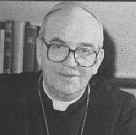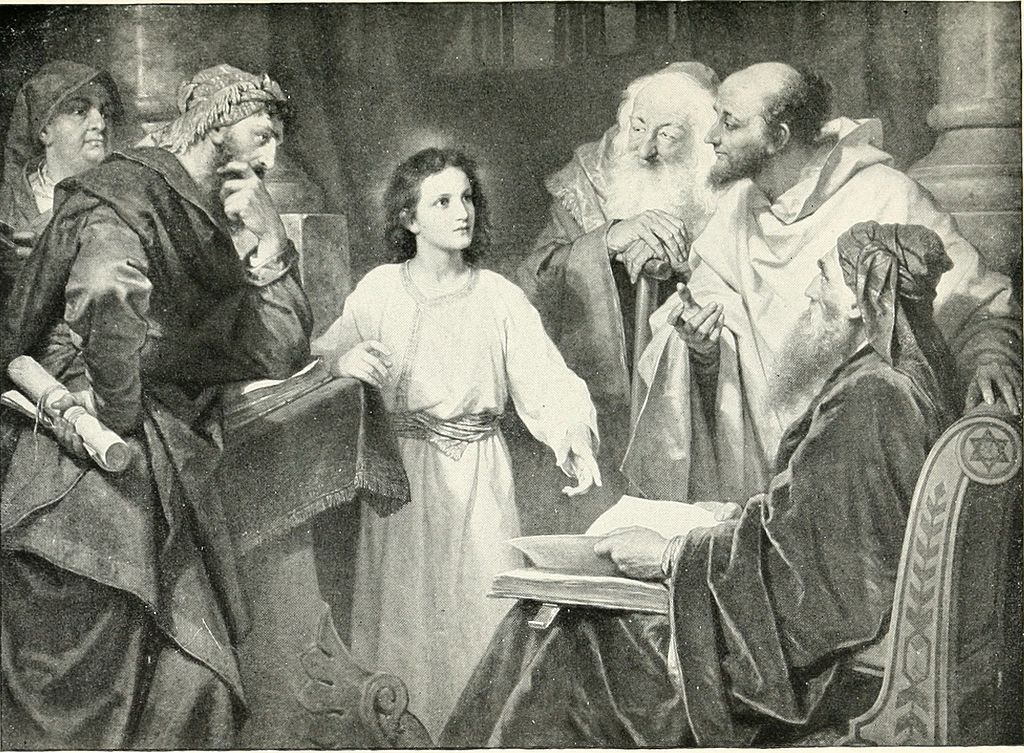|
To work for the proper implementation of canon law is to play an extraordinarily constructive role in continuing the redemptive mission of Christ. Pope John Paul II |
|
8 dec 2018 |
Research links
|
Related
Canon Law and:
Vatican I, coming
Vatican II, here
Trent, coming |
|
This page undergoing development |
Resources for canonical study of the Second Vatican Council
Besides its impact on virtually every aspect of Catholic pastoral life, the Twenty-First Ecumenical Council (1962-1965), known commonly as the Second Vatican Council or Vatican II, is of crucial importance for understanding much of the substantive content of the 1983 (Roman) and 1990 (Eastern) Codes of Canon Law.
|
|
Quick links |
|
Importance of the Vatican II for canon law |
The instrument, which the Code is, fully corresponds to the nature of the Church, especially as it is proposed by the teaching of the Second Vatican Council in general, and in a particular way by its ecclesiological teaching. Indeed, in a certain sense, this new Code could be understood as a great effort to translate this same doctrine, that is, the conciliar ecclesiology, into canonical language. If, however, it is impossible to translate perfectly into canonical language the conciliar image of the Church, nevertheless, in this image there should always be found as far as possible its essential point of reference. John Paul II, ap. con. Sacrae disciplinae leges (1983) [18].
|
John Paul II |
|
Announcement of the council |
John XXIII signs Humanae salutis |
Less than three months into his pontificate Pope St. John XXIII announced his intention to: (a) hold a synod for the Diocese of Rome; (b) celebrate an ecumencial council; and (c) reform the Pio-Benedictine Code of Canon Law. See John XXIII (reg. 1958-1963), alloc. Questa festiva (25 ian 1959), Acta Apostolicae Sedis 51 (1959) 65-69, esp. 68-69. This tripartite plan was reiterated a few months later in John XXIII (reg. 1958-1963), enc. Ad Petri cathedram (29 iun 1959), Acta Apostolicae Sedis 51 (1959) 497-531, at 498, Eng. trans. in The Pope Speaks 5 (1959) 359-383, at 359, or in C. Carlen, ed., The Papal Encyclicals, (Pierian Press, 1990) in 5 vols., V: 5-20, at 5, or on-line here. All three projects were undertaken.
The Synod of the Diocese of Rome was held in January 1960 but had virtually no influence on either the upcoming ecumenical council or the subsequent revision of canon law. Its acts were published in Prima Romana Synodus A.D. MDCCCCLX (Typis Polyglottis Vaticanis, 1960) xvi-662 pp. See generally John Abbo, “The Roman Synod”, Jurist 21 (1961) 170-203. |
|
Celebration of the council |
The Twenty-First Ecumenical Council was formally convoked in John XXIII (reg. 1958-1963), ap. con. Humanae salutis (25 dec 1961), Acta Apostolicae Sedis 54 (1962) 5-13, Eng. trans. in The Pope Speaks 7 (1961) 353-361, or on-line here. The council opened on 11 October 1962 and met in some 170 general congregations held during four sessions or periods. Pope St. John XXIII presided over the first session (1962) and Pope St. Paul VI presided over the second, third, and fourth sessions (1963, 1964, and 1965). Having promulgated sixteen major documents (see below), the council concluded on 8 December 1965.
In contrast to the First Vatican Council, which took place in the waning decades of Decretal Law (info here), the Second Vatican Council was conducted in accord with eight canons of the Pio-Benedictine Code (info here), namely 1917 CIC 222-229.
|
|
Primary sources |
The major fontes cognoscendi for the study of the Second Vatican Council are as follows:
• Acta et Documenta Concilio Oecumenico Vaticano II Apparando, Series I (Antepraeparatoria), (Typis Polyglottis Vaticanis, 1960-1961) in 16 vols. ▪ Notes: As titled, materials generated in advance of the council, especially by Roman authorities. This was the only attempt to provide contemporaneous documentation for the council as the sheer scale of the undertaking quickly made future attempts at timely publications impossible.
• Acta et Documenta Concilio Oecumenico Vaticano II Apparando, Series II (Praeparatoria), (Typis Polyglottis Vaticanis, 1964-1969), in 7 vols. ▪ Notes: As titled, materials generated in advance of the council, especially by persons and institutions consulted by Roman authorities.
• Acta Synodalia Sacrosancti Concilii Oecumenici Vaticani II (Typis Polyglottis Vaticanis, 1970-1999) in 35 vols. ▪ Notes: As titled, materials generated during the council by participants.
|
Second Vatican Council in plenary assembly |
|
|
• Sacrum Oecumenicum Concilium Vaticanum II, Constitutiones, Decreta, Declarationes (Typis Polyglottis Vaticanis, 1966) xxiv-1292 pp., or id., Constitutiones, Decreta, Declarationes (Typis Polyglottis Vaticanis, 1967) in 2 vols. ▪ Notes: While conciliar documents had been promulgated by their publication in the Acta Apostolicae Sedis (see below) these monographic versions were published for convenience.
|
|
Authoritative interpretations
|
The authoritative interpretation of the documents of Vatican II and some of its implementing measures was entrusted to:
• Commissio Centralis Coordinandis post Concilium Laboribus et Concilii Decretis Interpretandis (the Central Commission for the Coordination of post-Conciliar Projects and the Interpretation of Conciliar Decrees, active for a few months in 1966); and,
• Pontificia Commissio Decretis Concilii Vaticani Secundi Intepretandis (the Pontifical Commission for the Interpretation of the Decrees of the Second Vatican Council, active from February 1968 till June 1980).
Relatively few decisions or rulings were issued by these two bodies and published in the Acta Apostolicae Sedis. Instead most such matters were treated in the course of implementing the council and/or by their being incorporated into the 1983 and/or 1990 Codes of Canon Law.
|
|
Reference works |
Several reference works might be of interest to researchers, including:
• J. Deretz & A. Nocent, eds., Dictionary of the Council (Corpus, 1968) 506 pp., Eng. trans. of id., Synopse des Textes Conciliares (1966). ▪ Review: =. Notes: Key words and themes in sentences and short paragraphs.
• Xaverius Ochoa [Sanz] (Spanish Claretian, 1923-1989), Index verborum cum documentis Concilii Vaticani Secundi (Commentarium Pro Religiosis, 1967) 847 pp. ▪ Review: G. Rambaldi, Gregorianum 49 (1968) 776. Note: 300 pages of this work are simply the council documents.
|
|
Reports and memoirs
|
Several contemporaneous reports and/or memoires of council participants are available, including:
• Henri de Lubac (French Jesuit, 1896-1991), Vatican Council Notebooks, (Ignatius, 2015) in 2 vols., A. Stefanelli & A. Nash trans. of De Lubac's Carnets du concile (2007). ▪ Reviews: G. Routhier, Laval théologique et philosophique 64 (2008) 786; P. Vallin, Etudes 404 (2006) 408. ≡ De Lubac biograph.
• Giovanni Caprile, ed., Il Concilio Vaticano II: Cronache del Concilio Vaticano II edite da la Civiltà Cattolica, (Civiltà Cattolica, 1966-1969) in 4 vols. bound as 5. ▪ Reviews: D. Rees, Downside Review 87 (1969) 132-133.
• F. Anderson, ed., Council Daybook (National Catholic Welfare Conference, 1965) in 3 vols. ▪ Review: =. Notes: Selected press releases (largely from English language services), full or redacted conciliar speeches, and related essays and reports generally organized chronologically according to general congregations.
• Xavier Rynne [Francis Murphy] (Irish-American Redemptorist, 1914-2002), Vatican Council II [1968], (Orbis, 1999) 594 pp. ▪ Review: =. ≡ Murphy biograph.
• Xavier Rynne [Francis Murphy] (Irish-American Redemptorist, 1914-2002), Letters from Vatican City: Vatican Council II (First Session): Background and Debates (Farrar, Straus, 1963) 289 pp.; id., The Second Session: The Debates and Decrees of the Vatican Council, September 29 to December 4, 1963, (Farrar, Straus, 1964) 390 pp.; id., The Third Session: The Debates and Decrees of the Vatican Council, September 14 to November 21, 1964, (Farrar, Straus, 1964) 397 pp.; id., The Fourth Session: The Debates and Decrees of the Vatican Council, September 14 to December 8, 1965, (Farrar, Straus, 1965) 368 pp. ▪ Reviews: P. O'Connell, Irish Quarterly Review 54 (1965) 435-436 and 56 (1967) 90-91. ≡ Murphy biograph.
|
|
General studies of the council
|
In reverse chronological order, some of the more important general studies of the Second Vatican Council include:
• M. Lamb & M. Levering, eds., Vatican II: Renewal within Tradition, (Oxford, 2008) xxvi-462 pp. ▪ Reviews: B. Mikhail, Journal of Church and State 51 (2009) 280; A. Nichols, Thomist 72 (2008) 501-504.
• Agostino Marchetto (Italian priest, 1940-), The Second Vatican Ecumenical Council: A Counterpoint for the History of the Council, (Univ. Scranton, 2010) xxiv-723 pp., K. Whitehead trans. of Marchetto's Il concilio ecumenico Vaticano II. Contrappunto per la sua storia (2005). ▪ Review: N. Tanner, Archivum Historiae Ponitificiae 43 (2005) 335-337; K. Neufeld, Zeitschrift für katholosche Theologie 127 (2005) 552-554.
• Agostino Marchetto (Italian priest, 1940-), Il concilio ecumenico Vaticano II. Contrappunto per la sua storia, (Libreria Editrice Vaticana, 1995) 407 pp. ▪ Review: =. Notes: Later appeared in English as The Second Vatican Ecumenical Council: A Counterpoint for the History of the Council (2010).
• R. Latourelle, ed., Vatican II: Assessment and Perspectives, (Paulist, 1988) in 3 vols. ▪ Review: L. Richard, Theological Studies 50 (1989) 602-604. Notes: Contains more than 60 articles and essays.
• Joseph Ratzinger (German prelate, 1927-), Theological Highlights of Vatican II [1969], (Paulist, 2009) 266 pp. ▪ Review: =.
• Christopher Butler (English Benedictine, 1902-1986), The Theology of Vatican II [1967], (Christian Classics, rev. ed., 1981) 230 pp. ▪ Review: J. O'Connell, Irish Quarterly Review 71 (1982) 103. ≡ Butler biograph.
• Ralph Wiltgen (American Divine Word, 1921-2007), The Rhine Flows into the Tiber: The Unknown Council, (Hawthorne, 1967) 304 pp. ▪ Review: =. Notes: Suggests the disproportionate influence of German-speaking figures and their theories in the council.
• H. Vorgrimler, ed., Commentary on the Documents of Vatican II, (Herder, 1967-1969) in 5 vols., Eng. trans. of id., Das Zweite Vaticanisches Konzil (1966-1968). ▪ Reviews: J. Reid, Journal of Church and State 11 (1969) 167-168, P. Surlis, The Furrow 21 (1970) 134-135. Notes: First of the major commentaries on Vatican II with many entries authored by German-speaking conciliar experts and advisors.
• H. Vorgrimler, ed., Das Zweite Vaticanisches Konzil: Konstitutionene, Dekrete, und Erklärungen, Lateinisch und Deutsch (Herder, 1966-1968) in 3 vols. ▪ Review: E. Quinn, Downside Review 86 (1968) 326-327 and 87 (1969) 230. Notes: First of the major commentaries on Vatican II with many entries authored by German-speaking conciliar experts and advisors. Later appeared in English as H. Vorgrimler, ed., Commentary on the Documents of Vatican II (1967-1969).
Other selected studies are indicated under the relevant conciliar document.
|
|
Citations, appearances in law, other information |
Recalling that canonical researchers can already easily tell what conciliar documents, if any, were cited in various canons simply by looking at the footnotes to those canons, these tables help conciliar researches identify which conciliar passages might have been drawn upon in drafting either or both codes. The following tiles present two kinds of information: first, official citations for the sixteen documents promulgated by the Second Vatican Council; then, tables indicating where numbered paragraphs of those document were cited by the Legislator in the 1983 (Western) and/or 1990 (Eastern) Codes of Canon Law and occasional supplemental notes. Finally, selected bibliographies of materials on or related to conciliar documents and themes are provided.
|
|
|
Constitution on the Liturgy (1963)
Formal citation: Sacrosanctum Oecumenicum Concilium Vaticanum II, Constitutio de Sacra Liturgia Sacrosanctum Concilium (4 dec 1963), Acta Apostolicae Sedis 56 (1964) 97-138, or id., Constitutiones, Decreta, Declarationes (Typis Polyglottis Vaticanis, 1966) 3-69; Eng. trans. in A. Flannery, ed., Vatican Council II: The Conciliar and Post-Conciliar Documents (Catholic Book Publishing, 1975) 1-37, or on-line here. Prominent commentary includes: Josef Jungmann, in H. Vorgrimler, ed., Commentary on the Documents of Vatican II, (Herder, 1967-1969) in 5 vols., vol. I: 1-87.
Seventy-eight of the 130 (i.e., 60%) provisions of Sacrosanctum Concilium were cited a total of 142 times in the 1983 Code, as follows:
Notes: ≠
Selected studies:
• W. Baraúna, ed., The Liturgy of Vatican II: a Symposium in Two Volumes, (Franciscan Herald, 1966) in 2 vols. ▪ Review: R. Ledogar, Worship 41 (1967) 181-182. Notes: Contributions by Arns, Baraúna, Barbosa, Bettencourt, Dell’Oro, Della Torre, Castro Engler, Fesenmayer, Gelineau, Heuschen, Jungmann, Kémérer, Kloppenburg, Koser, Leonard, Marsili, Masson, Mueller, Neunheuser, Nocent, Vagagini, and Vanderbrouke.
• A. Bugnini & C. Braga, eds., The Commentary on the Constitution and on the Instruction on the Sacred Liturgy, (Benziger, 1965) 441 pp. ▪ Review: =. Notes: The instruction discussed is, of course, Inter Oecumenici (1964).
• Louis Bouyer (French priest, 1913-2004), The Liturgy Revived: a doctrinal commentary on the conciliar constitution on the liturgy (Notre Dame, 1964) 107 pp. ▪ Review: =. Notes: =. ≡ Bouyer biograph.
• aa.vv., Constitutio de Sacra Liturgia cum Commentario (Edizioni Liturgiche, 1964), approx 200 pages. ▪ Review: =. Notes: Originally appeared in Ephemerides Liturgicae 78 (1964) 185-420, with commentary by 21 experts in liturgy. Pagination for the monograph edition was not corrected from the journal version and so the indexes are confusing.
|
|
|
Decree on Social Communications (1963)
Formal citation: Sacrosanctum Oecumenicum Concilium Vaticanum II, Decretum de Instrumentis Communicationis Socialis Inter mirifica (4 dec 1963), Acta Apostolicae Sedis 56 (1964) 145-157, or id., Constitutiones, Decreta, Declarationes (Typis Polyglottis Vaticanis, 1966) 73-89; Eng. trans. in A. Flannery, ed., Vatican Council II: The Conciliar and Post-Conciliar Documents (Catholic Book Publishing, 1975) 283-292, or on-line here. Prominent commentary includes: Karlheinz Schmidthüs, in H. Vorgrimler, ed., Commentary on the Documents of Vatican II, (Herder, 1967-1969) in 5 vols., vol. I: 89-104.
Eight of the 24 (i.e., 33%) provisions of Inter mirifica were cited a total of 10 times in the 1983 Code, as follows:
Notes: ≠
Selected studies: =
|
|
|
Dogmatic constitution on the Church (1964)
Formal citation: Sacrosanctum Oecumenicum Concilium Vaticanum II, Constitutio Dogmatica de Ecclesia Lumen gentium (21 nov 1964), Acta Apostolicae Sedis 57 (1965) 5-75, or id., Constitutiones, Decreta, Declarationes (Typis Polyglottis Vaticanis, 1966) 93-219; Eng. trans. in A. Flannery, ed., Vatican Council II: The Conciliar and Post-Conciliar Documents (Catholic Book Publishing, 1975) 350-426, or on-line here. Prominent commentary includes: aa.vv., H. Vorgrimler, ed., Commentary on the Documents of Vatican II, (Herder, 1967-1969) in 5 vols., vol. I: 105-305.
Sixty-three of the 69 (i.e., 91%) provisions of Lumen gentium were cited a total of 255 times in the 1983 Code, as follows:
Special note: The constitution Lumen gentium was accompanied by an unusual document from the conciliar Doctrinal Commission contextualizing Chapter III of the then-draft constitution. See Pericles Felici, Nota praevia explicitiva (16 nov 1963), AAS 57 (1965) 72-75, Eng. trans. in A. Flannery, ed., Vatican Council II: The Conciliar and Post-Conciliar Documents (Catholic Book Publishing, 1975) 423-426, or on-line here. This "Preliminary Explanatory Note" in four numbered paragraphs is always published along with the approved text of Lumen gentium and is essential to its interpretation. It was generally cited by the 1983 Code as a source for Canons 330 and 336, and was cited more specifically as follows:
Notes: ≠
Selected studies:
• S. Bogulsawski and R. Fastiggi, eds., Called to Holiness and Communion: Vatican II on the Church (University of Scranton, 2009) xiv-400 pp. ▪ Review: T. Lim, Religious Studies Review 37 (2011) 29.
• Francisco Gil Hellín (Spanish prelate, 1940-), Concilii Vaticani II Synopsis in ordinem redigens schemata cum relationibus necnon patrum orationes atque animadversiones: Constitutio dogmatica de Ecclesia Lumen gentium, (Libreria Editrice Vaticana, 1995) 2186 pp. ▪ Review: =. ≡ Hellín biograph.
• Jan Grootaers (=, =), Primauté et Collégialité: le dossier de Gérard Philips sur la Nota Explicativa Praevia (Lumen gentium, Chap. III) présenté avec introduction historique, annotations, et annexes, (Leuven Univ., 1986) 219 pp. ▪ Review: =. Notes: =.
• Bonaventure Kloppenburg (German-Brazilian Franciscan, 1919-2009), The Ecclesiology of Vatican II, (Franciscan Herald, 1974) 373 pp., M. O'Connell trans. of Kloppenburg's A Eclesiologia do Vaticano II (1971). ▪ Review: =. ≡ Kloppenburg biograph.
• K. McNamara, ed., Vatican II: The Constitution on the Church: A theological and pastoral commentary, (Franciscan Herald Press, 1968) 437 pp. ▪ Review: =. Notes: Contributions by Corbett, Flanagan, McGoldrick, McNamara, O’Donnell, and Ryan.
• Gérard Philips (French priest 1899-1972), L’Église et son Mystère au II° Concile du Vatican: Histoire, texte, et commentarie de la Constitution Lumen gentium, (Desclée, 1967) in 2 vols. ▪ Review: V. De Waal, Theology 71 (1968) 568.
|
|
|
Decree on Eastern Churches (1964)
Formal citation: Sacrosanctum Oecumenicum Concilium Vaticanum II, Decretum de Ecclesiis Orientalibus Catholicis Orientalium Ecclesiarum (21 nov 1964), Acta Apostolicae Sedis 57 (1965) 76-89, or id., Constitutiones, Decreta, Declarationes (Typis Polyglottis Vaticanis, 1966) 223-240; Eng. trans. in A. Flannery, ed., Vatican Council II: The Conciliar and Post-Conciliar Documents (Catholic Book Publishing, 1975) 441-451, or on-line here. Prominent commentary includes: Johannes Hoeck, in H. Vorgrimler, ed., Commentary on the Documents of Vatican II, (Herder, 1967-1969) in 5 vols., vol. I: 307-331.
Seventeen of the 30 (i.e., 57%) provisions of Orientalium Ecclesiarum were cited a total of 21 times in the 1983 Code, as follows:
Notes: ≠
Selected studies: =
|
|
|
Decree on ecumenism (1965)
Formal citation: Sacrosanctum Oecumenicum Concilium Vaticanum II, Decretum de Oecumenismo Unitatis redintegratio (21 nov 1964), Acta Apostolicae Sedis 57 (1965) 90-112, or id., Constitutiones, Decreta, Declarationes (Typis Polyglottis Vaticanis, 1966) 243-274; Eng. trans. in A. Flannery, ed., Vatican Council II: The Conciliar and Post-Conciliar Documents (Catholic Book Publishing, 1975) 452-473, or on-line here. Prominent commentary includes: Werner Becker and Johannes Feiner, in H. Vorgrimler, ed., Commentary on the Documents of Vatican II, (Herder, 1967-1969) in 5 vols., vol. II: 1-164.
Eight of the 24 (i.e., 33%) provisions of Unitatis redintegratio were cited a total of 12 times in the 1983 Code, as follows:
Notes: ≠
Selected studies:
• Bernard Leeming (English Jesuit, 1893-1971), The Vatican Council and Christian Unity: a commentary on the decree on ecumenism of the Second Vatican Council, together with a translation of the text, (Harper & Row, 1966) 333 pp. ▪ Review: B. De Winton, New Blackfriars 47 (1966) 666-667; H. Brandreth, Journal of Theological Studies 18 (1967) 5320534.
• M. Adams., ed., Vatican II on Ecumenism: Text & Commentaries (Scepter, 1966) 117 pp. ▪ Review: =. Notes: Contributions by Adams, McDonagh, McNamara, Stransky, and Kelly.
• Lorenz Jaeger (German priest, 1892-1975), A Stand on Ecumenism: the council's decree, (Kenedy, 1965), 242 pp., H. Graef trans. of Jaeger’s Das Konzilsdekret ‘Über den Ökumenismus’ (1965). ▪ Review: =. Notes: =. ≡ Jaeger biograph.
|
|
|
Decree on pastoral office of bishops (1965)
Formal citation: Sacrosanctum Oecumenicum Concilium Vaticanum II, Decretum de Pastorali Episcoporum Munere in Ecclesia Christus Dominus (28 oct 1965), Acta Apostolicae Sedis 58 (1966) 673-701, or id., Constitutiones, Decreta, Declarationes (Typis Polyglottis Vaticanis, 1966) 277-330; Eng. trans. in A. Flannery, ed., Vatican Council II: The Conciliar and Post-Conciliar Documents (Catholic Book Publishing, 1975) 564-590, or on-line here. Prominent commentary includes: Klaus Mörsdorf, in H. Vorgrimler, ed., Commentary on the Documents of Vatican II, (Herder, 1967-1969) in 5 vols., vol. II: 165-300.
Thirty-eight of the 44 (i.e., 86%) provisions of Christus Dominus were cited a total of 204 times in the 1983 Code, as follows:
Notes: All of Christus Dominus is referenced in CIC 0376. ≡ CIC 0336 cites to a non-existent CD 49.
Selected studies: =
|
|
|
Decree on the renewal of religious life (1965)
Formal citation: Sacrosanctum Oecumenicum Concilium Vaticanum II, Decretum de Accommodata Renovatione Vitae Religiosae Perfectae caritatis (28 oct 1965), Acta Apostolicae Sedis 58 (1966) 702-712, or id., Constitutiones, Decreta, Declarationes (Typis Polyglottis Vaticanis, 1966) 333-353; Eng. trans. in A. Flannery, ed., Vatican Council II: The Conciliar and Post-Conciliar Documents (Catholic Book Publishing, 1975) 611-623, or on-line here. Prominent commentary includes: Friedrich Wulf, in H. Vorgrimler, ed., Commentary on the Documents of Vatican II, (Herder, 1967-1969) in 5 vols., vol. II: 301-370.
Twenty-four of the 25 (i.e., 96%) provisions of Perfectae caritatis were cited a total of 101 times in the 1983 Code, nearly all of these in Part 3 of Book II of the Code.
Notes: ≠
Selected studies:
• R. Wiltgen, ed., The Religious Life Defined: an official commentary on the Second Vatican Council deliberations, (Divine Word, 1970) 135 pp. ▪ Review: =. Notes: =.
|
|
|
Decree on priestly formation (1965)
Formal citation: Sacrosanctum Oecumenicum Concilium Vaticanum II, Decretum de Institutione Sacerdotali Optatam totius (28 oct 1965), Acta Apostolicae Sedis 58 (1966) 713-727, or id., Constitutiones, Decreta, Declarationes (Typis Polyglottis Vaticanis, 1966) 357-384; Eng. trans. in A. Flannery, ed., Vatican Council II: The Conciliar and Post-Conciliar Documents (Catholic Book Publishing, 1975) 707-724, or on-line here. Prominent commentary includes: Josef Neuner, in H. Vorgrimler, ed., Commentary on the Documents of Vatican II, (Herder, 1967-1969) in 5 vols., vol. II: 371-404.
All twenty-one provisions (i.e., 33%) of Optatam totius were cited a total of 68 times in the 1983 Code, as follows:
Notes: All of Optatam totius is regarded by the Legislator as having contributed to CIC 0232 and 659 § 3. ≡ Canon 0659 cites to a non-existent OT 22.
Selected studies: =
|
|
|
Declaration on christian education (1965)
Formal citation: Sacrosanctum Oecumenicum Concilium Vaticanum II, Declaratio de Educatione Christiana Gravissimum educationis (28 oct 1965), Acta Apostolicae Sedis 58 (1966) 728-739, or id., Constitutiones, Decreta, Declarationes (Typis Polyglottis Vaticanis, 1966) 387-408; Eng. trans. in A. Flannery, ed., Vatican Council II: The Conciliar and Post-Conciliar Documents (Catholic Book Publishing, 1975) 725-737, or on-line here. Prominent commentary includes: Johannes Pohlschneider, in H. Vorgrimler, ed., Commentary on the Documents of Vatican II, (Herder, 1967-1969) in 5 vols., vol. IV: 1-48.
All twelve provisions (i.e., 100%) of Gravissimum educationis were cited a total of 43 times in the 1983 Code, as follows:
Notes: ≠
Selected studies: =
|
|
|
Declaration on relations with non-christian religions (1965)
Formal citation: Sacrosanctum Oecumenicum Concilium Vaticanum II, Declaratio de Ecclesiae Habitudine ad Religiones Non-Christianas Nostra aetate (28 oct 1965), Acta Apostolicae Sedis 58 (1966) 740-744, or id., Constitutiones, Decreta, Declarationes (Typis Polyglottis Vaticanis, 1966) 411-418; Eng. trans. in A. Flannery, ed., Vatican Council II: The Conciliar and Post-Conciliar Documents (Catholic Book Publishing, 1975) 738-742, or on-line here. Prominent commentary includes: aa.vv., in H. Vorgrimler, ed., Commentary on the Documents of Vatican II, (Herder, 1967-1969) in 5 vols., vol. III: 1-154.
None of the 5 (i.e., 0%) provisions of Nostrae aetate was cited in the 1983 Code, as follows:
Notes: ≠
Selected studies:
• Arthur Gilbert (=, =), The Vatican Council and the Jews, (World Publishing, 1968) 322 pp. ▪ Review: I. Blank, American Jewish Historical Quarterly 62 (1973) 440-441; D. Baker, Journal of Church and State 11 (1969) 335-338.
|
|
|
Dogmatic constitution on divine revelation (1965)
Formal citation: Sacrosanctum Oecumenicum Concilium Vaticanum II, Constitutio Dogmatica de Divina Revelatione Dei verbum (18 nov 1965), Acta Apostolicae Sedis 58 (1966) 817-836, or id., Constitutiones, Decreta, Declarationes (Typis Polyglottis Vaticanis, 1966) 423-456; Eng. trans. in A. Flannery, ed., Vatican Council II: The Conciliar and Post-Conciliar Documents (Catholic Book Publishing, 1975) 750-765, or on-line here. Prominent commentary includes: aa.vv., in H. Vorgrimler, ed., Commentary on the Documents of Vatican II, (Herder, 1967-1969) in 5 vols., vol. III: 155-272.
Eleven of the 26 provisions (i.e., 42%) of Dei Verbum were cited a total of 15 times in the 1983 Code, as follows:
Notes: ≠
Selected studies:
• Francisco Gil Hellín (Spanish prelate, 1940-), Concilii Vaticani II Synopsis in ordinem redigens schemata cum relationibus necnon patrum orationes atque animadversiones: Constitutio dogmatica de divina revelatione Dei Verbum, (Libreria Editrice Vaticana, 1993) 744 pp. ▪ Review: =. ≡ Hellín biograph.
|
|
|
Decree on the apostolate of the laity (1965)
Formal citation: Sacrosanctum Oecumenicum Concilium Vaticanum II, Decretum de Apostolatu Laicorum Apostolicam actuositatem (18 nov 1965), Acta Apostolicae Sedis 58 (1966) 837-864, or id., Constitutiones, Decreta, Declarationes (Typis Polyglottis Vaticanis, 1966) 459-508; Eng. trans. in A. Flannery, ed., Vatican Council II: The Conciliar and Post-Conciliar Documents (Catholic Book Publishing, 1975) 766-798, or on-line here. Prominent commentary includes: Ferdinand Klostermann, in H. Vorgrimler, ed., Commentary on the Documents of Vatican II, (Herder, 1967-1969) in 5 vols., vol. III: 273-404.
Twenty-eight of the 33 (i.e., 85%) provisions of Apostolicam actuositatem were cited a total of 82 times in the 1983 Code, as follows:
Notes: All of Apostolicam actuositatem is cited as a source for CIC 0759.
Selected studies: =
|
|
|
Declaration on religious liberty (1965)
Formal citation: Sacrosanctum Oecumenicum Concilium Vaticanum II, Declaratio de Libertate Religiosa Dignitatis humanae (7 dec 1965), Acta Apostolicae Sedis 58 (1966) 929-946, or id., Constitutiones, Decreta, Declarationes (Typis Polyglottis Vaticanis, 1966) 511-540; Eng. trans. in A. Flannery, ed., Vatican Council II: The Conciliar and Post-Conciliar Documents (Catholic Book Publishing, 1975) 799-812, or on-line here. Prominent commentary includes: Pietro Pavan, in H. Vorgrimler, ed., Commentary on the Documents of Vatican II, (Herder, 1967-1969) in 5 vols., vol. IV: 49-86.
Seven of the 15 provisions (i.e., 47%) of Dignitatis humanae were cited a total of 11 times in the 1983 Code, as follows:
Notes: ≠
Selected studies:
• David Schindler (American layman, =) & Nicholas Healy, Jr. (American layman, =), Freedom, Truth, and Human Dignity: The Second Vatican Council's Declaration on religious Freedom, A New Translation, redaction History, and Interpretation of Dignitatis Humanae, (Eerdmans, 2015) 477 pp. ▪ Review: =.
• Hermínio Rico (Portuguese Jesuit, =), John Paul II and the Legacy of Dignitatis humanae, (Georgetown, 2002) 273 pp. ▪ Reviews: J. O'Brien, Jurist 63 (2003) 202; A. Nichols, Theology 106 (2003) 145-147.
|
|
|
Decree on missionary activity of the Church (1965)
Formal citation: Sacrosanctum Oecumenicum Concilium Vaticanum II, Decretum de Activitate Missionali Ecclesiae Ad gentes divinitus (7 dec 1965), Acta Apostolicae Sedis 58 (1966) 947-990, or id., Constitutiones, Decreta, Declarationes (Typis Polyglottis Vaticanis, 1966) 543-615; Eng. trans. in A. Flannery, ed., Vatican Council II: The Conciliar and Post-Conciliar Documents (Catholic Book Publishing, 1975) 813-856, or on-line here. Prominent commentary includes: Suso Brechter, in H. Vorgrimler, ed., Commentary on the Documents of Vatican II, (Herder, 1967-1969) in 5 vols., vol. IV: 87-181.
Thirty-five of the 42 (i.e., 83%) provisions of Ad gentes were cited a total of 88 times in the 1983 Code, as follows:
Notes: All of Ad gentes divinitus is cited as a source for CIC 0786.
Selected studies: = |
|
|
Decree on life and ministry of priests (1965)
Formal citation: Sacrosanctum Oecumenicum Concilium Vaticanum II, Decretum de Presbyterorum Ministerio et Vita Presbyterorum ordinis (7 dec 1965), Acta Apostolicae Sedis 58 (1966) 991-1024, or id., Constitutiones, Decreta, Declarationes (Typis Polyglottis Vaticanis, 1966) 619-678; Eng. trans. in A. Flannery, ed., Vatican Council II: The Conciliar and Post-Conciliar Documents (Catholic Book Publishing, 1975) 863-902, or on-line here. Prominent commentary includes: aa.vv., in H. Vorgrimler, ed., Commentary on the Documents of Vatican II, (Herder, 1967-1969) in 5 vols., vol. IV: 183-297.
Twenty-one of the 22 (i.e., 95%) provisions of Presbyterorum ordinis were cited a total of 132 times in the 1983 Code, as follows:
Notes: All of Presbyterorum ordinis is cited as source for CIC 713 § 3.
Selected studies:
• Francisco Gil Hellín (Spanish prelate, 1940-), Concilii Vaticani II Synopsis in ordinem redigens schemata cum relationibus necnon patrum orationes atque animadversiones: Decretum de presbyterorum ministro et vita Presbyterorum ordinis, (Libreria Editrice Vaticana, 1996) 808 pp. ▪ Review: =. ≡ Hellín biograph.
• René Wasselynck (= priest, =), Les Prêtres: Élaboration du décret Presbyterorum ordinis de Vatican II, (Desclée, 1968), in 2 vols. ▪ Review: =. Notes: Selected textual analyses based on and in comparison with various earlier drafts of the decree.
|
|
|
Pastoral constitution on the Church in the modern world (1965)
Formal citation: Sacrosanctum Oecumenicum Concilium Vaticanum II, Constitutio Pastoralis de Ecclesia in Mundo Huius Temporis Gaudium et spes (7 dec 1965), Acta Apostolicae Sedis 58 (1966) 1025-1120, or id., Constitutiones, Decreta, Declarationes (Typis Polyglottis Vaticanis, 1966) 681-835; Eng. trans. in A. Flannery, ed., Vatican Council II: The Conciliar and Post-Conciliar Documents (Catholic Book Publishing, 1975) 903-1001, or on-line here. Prominent commentary includes: aa.vv., in H. Vorgrimler, ed., Commentary on the Documents of Vatican II, (Herder, 1967-1969) in 5 vols., vol. V: 1-379.
Thirty-two of the 93 (i.e., 34%) provisions of Gaudium et spes were cited a total of 64 times in the 1983 Code, as follows:
Notes: ≠
Selected studies:
• Francisco Gil Hellín (Spanish prelate, 1940-), Concilii Vaticani II Synopsis in ordinem redigens schemata cum relationibus necnon patrum orationes atque animadversiones: Constitutio Pastoralis de ecclesia in mundo huius temporis Gaudium et spes, (Libreria Editrice Vaticana, 2003) 1658 pp. ▪ Review: =. ≡ Hellín biograph.
• A. Herrera Oria, ed., Comentarios a la constitución Gaudium et spes sobre la Iglesia en el mundo actual, (Biblioteca de Autores Cristianos, 1968) 628 pp. ▪ Review: =. Notes: Contributions by Capelo, Cirarda, González Moralejo, Guix, Martín-Artajo, Pereña, Rodríguez, Sánchez Aizcorbe, Santamaría, Setién, Sigmond, and Zalba.
• U. Brand, ed., L’Église dans le monde de ce temps, Constitution Gaudium et spes: Commentaires du Schema XIII, (Mame, 1967) 420 pp., anon. trans. of De Kerk in de Wereld van Deze Tijd: Schéma XIII – tekst en commentaar (1967). ▪ Review: =. Notes: Contributions by Calvez, Chenu, Dondeyne, Dubarle, Heylen, Lawrence, Lebret, Rahner, Reid, Riedmatten, Schillebeeckx.
• Peter Riga (American priest, 1933-2018), The Church Made Relevant: A Commentary on the Pastoral Constitution of Vatican II, (Fides, 1967) 337 pp. ▪ Review: =.
• aa.vv., L’Église dans le monde de ce temps, Constitution pastorale Gaudium et spes, (Éditions du Cerf, 1967) in 3 vols., ▪ Review: =. Notes: Vol. I presents Latin text of Gaudium et spes and the official French episcopate translation thereof in 211 pages with a commentary on the history of the text in some 60 pages; Vol. II consists of commentaries on the text by G. & F. Baecque, Calvez, Chenu, Congar, Delhaye, Dondeyne, Dubarle, Girardi, Goldie, Grootaers, Haubtmann, Houtart, Jeanson, Lambert, McGrath, Moeller, Mouroux, Mury, Perroux, Roux, Struve, Thils, and Tucci; Vol. III presents “reflections and perspectives” by several of the same authors.
|
|
Staging |
|
Essays
|
1.
In the eyes of Pope John XXIII, the revision of the Code of canon law was
inseparable from the work of the Ecumenical Council. The pair constituted two
points of the same program announced on the same day at St. Paul’s outside the
Walls on January 25th 1959.
For the first time in history a reform of ecclesiastical legislation would be directly developed from Church teaching long maturing. Practically speaking, the principle text of Vatican II is the Dogmatic Constitution on the Church, Lumen gentium. It crowns a whole series of documents on internal renewal and on various lines of conduct for post-Conciliar dialogue, and constitutes an ecclesiological given that has no comparison with what we have encountered in the past. Certainly the whole heritage of the Church is present therein, but one finds within this work an organic synthesis of enhanced value that augments this teaching and enables it to address new situations.
Open
the new Code, and you will find the teaching of Lumen gentium and the
other Conciliar texts. The Pontifical Commission for the Revision of the Code
has faithfully carried out the work that John XXIII entrusted to it and that has
been confirmed by his successors.
2. Obviously one does not find the entire Council in the Code. The doctrinal and pastoral teaching of Vatican II gives specific directions that law must take into account and issues therefrom a complex of norms already well formulated; but Church teaching does not stop with considerations that are directly or indirectly juridic. The doctrine of the Church will always be richer than canon law because one cannot express everything in law.
On the other hand, the Code contains norms that are not found in the Council. One notes that after the first session [of the Council] it was necessary to reduce considerably the proposed schemata, and to see that a large part of the preliminary questions would be entrusted to the Code Commission instituted for this purpose at precisely that moment (29 March 1963), between the first and second session. Still, the Code must legislate on subjects that are indispensable for the life of the Church but were not treated by the Council in depth or weren’t treated at all. Finally, one will not find at all times the language of the Council in the Code. Juridic style has its own requirements and vocabulary. What is essential is that the Code conform to the Council’s ideas.
3.
Vatican II presents an ecclesiology of communion that one easily finds in the
Code. In this vein, Canon 204 § 1 of Book II (De Populo Dei) is typical.
It defines the faithful (members of the Church) in relation to the vocation that
they have to exercise, each one in the situation where he finds himself, within
the mission that God has entrusted to his Church on earth. This vocation is
founded on their incorporation in Christ by baptism, on the fact that they
constitute the People of God, and on their participation in the priestly,
prophetic, and royal missions of Christ. The definition of the faithful precedes
the canon that distinguishes clergy from laity in so far as they have been
constituted, or not, sacred ministers by the sacrament of orders (1983 CIC 207
§ 1). All are called to take part in the mission of the Church because all are
baptized and form part of the unique People of God. This universal call, that
excludes no one, establishes among the faithful a true equality that the Code
underscores in Canon 208. Of course, baptism does not confer by itself a sort of
generic qualification to assume just any role in the Christian community. In the
realization of the mission of the Church, each person works according to his own
condition and his own function (secundum propriam cujusque conditionem et
munus, Canon 208). One might also consider the action of sacraments received
(confirmation, marriage, and above all orders), other spiritual gifts, duties
assigned by the hierarchy, the religious state, talents placed at the service of
the Church, and so on. The Church is thus a differentiated community in which
pastors are constituted as such by the sacrament of orders.
4.
It is thus a matter of an application of communion in the Church that is founded
on the fact that each faithful takes part in a unique living reality, one in
which each carries out his part and to which each brings a share of all he is
and all that he has received. At the heart of this special unity, the bonds of
reciprocity and interdependence are formed between each member of the Church and
all the others.
5.
It follows that one cannot oppose an ecclesiology of communion to a juridic
ecclesiology. This would lead to doing an injustice to the notion of communion
that, far from being a recent creation of theology, is to the contrary a living
reality expressed all through the history of the church, sending its roots deep
into biblical witness. This reality reclaims a juridic form that demands that
one be animated by charity. For my part I would define the Church just as
understood by the Council and the Code, that is to say, as a communion at once
interior and exterior, with the interior communion of the spiritual life (of
faith, hope, and charity) being signified and produced by an exterior communion
of faith, discipline, and sacramental life. As a consequence, the hierarchic
constitution of the Church must be considered as a form of service proper to
certain of its members and making up an essential part of ecclesial communion.
6.
After having studied and reviewed the work of the commission, John Paul II has
approved and promulgated the new Code that henceforth will be the law of the
Church. This promulgation solemnly expresses before the eyes of the whole world
the will of the Church to conform her institutions to the model set forth by
Vatican II. Certainly this will does not date from today, for since the day
after the Council various partial legislations, provisory and sometimes ad
experimentum, have given a concrete form to Conciliar directives. But today,
the Church takes a new step forward in promulgating a universal and definitive
legislation that engages the future with a view toward considerable duration.
The realization of the Council has certainly been the principle objective pursued by the revision of the Code. This has also been the formal commitment taken up by John Paul II on the day after his election (Message to the World, 17 October 1978) it treats without any doubt a work of wide scope and common commitment; and that is why the legislator must be able to count on the goodwill and perseverance of all. As with the 1917 Code, the new Code will have its imperfections. This is inevitable. But this is why the Code itself (1983 CIC 16) has foreseen the possibility of the authentic interpretation of norms which might be in need of such. There will, to be sure, be other difficulties to face, but they will be easily overcome by those who strive to recognize in the 1983 Code the ecclesiology of the Second Vatican Council.
|
|
|
|
|
|
F. McManus, “The Second Vatican Council and the canon law”, Jurist 22 (1962) 259-286.
J. Baldanza, “La constituzione ‘De Ecclesia’ ed alcune considerazioni sullo spirito che deve animare la riforma del Codice di diritto canonico”, Ephemerides Iuris Canonici 21 (1965) 158-176.
|
|
Staging |
• aa.vv., L’Église de Vatican II: Études autour de la constitution conciliare sur l’Église, (Éditions du Cerf, 1967) in 2 (3?) vols., more than 50 contributors. ▪ Review: =. Notes: =.
|
|
|
Comments: |
|
Materials on this website represent the opinions of Dr. Edward Peters and are offered in accord with Canon 212 § 3. This website undergoes continual refinement and development. No warranty of completeness or correctness is made. Dr. Peters' views are not necessarily shared by others in the field nor are they intended as canonical or civil advice.
CanonLaw.info Homepage & Site Directory / Help support CanonLaw.info / Original Materials © Edward N. Peters |
